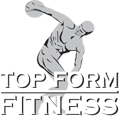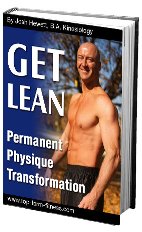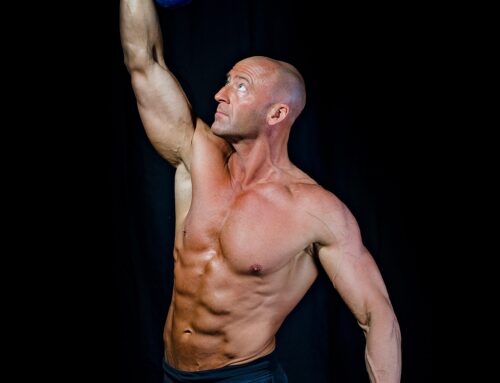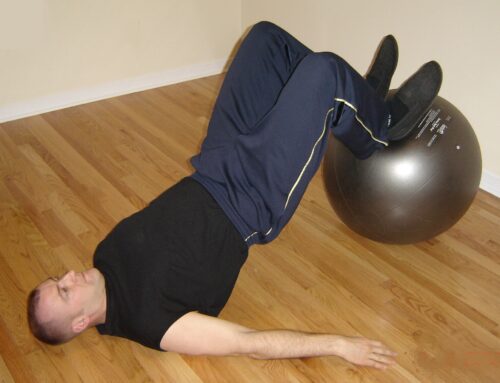A friend and colleague of mine, Kane Sumabat, is one of the most fit, muscular, lean and aesthetic guys I know, and yet poptarts, pizza, hamburgers, and bacon are staples of his diet. How can he stay in such great shape while consuming all of that so-called “junk food”?
Keep in mind, those aren’t his cheat meals… they are just some of his food choices that fit into his carefully planned nutrition program. Once he described his nutritional philosophy to me I was interested to learn more about it, so I began to do some research. I’d like to share some of what I discovered in this article.
When it comes to losing body fat, gaining weight, and transforming your physique overall, the primary factor to consider is nutrition. Obviously an intelligent approach to training is necessary, but for most people if the diet isn’t on point the results will be disappointing.
With this knowledge in mind, what is the ideal approach to a solid nutrition plan? There are so many different “diets” available to us, how do we know what to choose? For example:
- There’s the popular low carb / no carb diets like Atkins or Cyclic Ketosis (which may work, but are unreasonable to maintain long term);
- Low-fat diets (which are ridiculous and unhealthy!);
- Paleo “Caveman” diet (which I actually like, but still feel it is lacking in some respects, such as tracking your nutrient intake);
- South Beach diet (may have health benefits, but is not comprehensive);
- Intermittent Fasting (this is more of an “eating schedule” than it is a “diet”. Learn more on my I.F. blog post HERE)
- Vegetarian and Vegan diets (again, despite some benefits tends to be very restrictive and difficult to achieve balanced nutrient intake)
=> Watch my video on Veganism HERE!
And the list goes on and on. In this article I want to discuss two very popular nutritional approaches and compare the pros and cons of each. These two nutrition “plans” are called IIFYM and “Clean Eating.”
What is IIFYM?
That’s an acronym that stands for “If It Fits Your Macros”. It is also referred to as “Flexible Dieting”. This is the nutrition strategy that my friend Kane uses. Basically, followers of flexible dieting believe that it doesn’t matter so much “what” you eat or “when” you eat it, as long as you meet specific ratios of protein, fats, and carbs (the macronutrients) in your diet, and achieve your target caloric intake based on your individual needs and goals. A more detailed explanation can be seen in the videos below.
So why is Flexible Dieting or IIFYM so popular? Well, primarily because it is so effective! The principles of IIFYM are based on pretty solid science. If your goal is to improve your body composition, the fundamentals of this approach will help you get results.
Although the specific recommendations for calorie and macronutrient intake vary depending on which expert you talk to, here is what I suggest:
Caloric Intake
- 15 calories per pound of body weight as a rough guideline for weight maintenance (basal metabolic rate)
- Increase or reduce caloric intake by at least 10% OR 300 calories per day, depending on whether your goals are to gain muscle or lose fat.
- Track your results (weight, measurements, body composition) and adjust accordingly over time.
Macronutrient Intake
- Start with one gram of protein per pound of body weight per day (or 1 gram per lb of lean body weight, if the individual is obese)
- The remainder of your calories would come from fat or carbohydrate.
- I suggest higher fat intake on non-strength training days (ie: rest days or HIIT / cardio days), and higher carbs on strength training days.
I discuss how to balance your calories and nutrients in greater detail and explain my reasoning for this in my ebook “Get Lean: Permanent Physique Transformation.”
The benefits of IIFYM is that it necessitates that you track your calorie and nutrient intake, which creates awareness in your diet and food consumption and allows you to determine how many calories your body needs or uses, as well as meeting certain macronutrient requirements. Recording your progress by keeping a journal is a proven way to get better results with ANY goal you have, whether it be in the gym, in business, or in the kitchen.
The drawback of IIFYM / flexible dieting is that many people misinterpret it as a licence to eat as much processed “junk food” as they want. Very little attention is typically given to micronutrient intake or the affect of your food choices on your hormones, digestion, metabolism, or overall health. However, the goal of IIFYM is to first meet your caloric and macro needs with healthy, nutrient dense foods; only once those basic needs are met can any remaining calories be made up by consuming so-called “junk food”.
Click HERE for a good explanation of this aspect of IIFYM.
It’s also popular for flexible dieters to post pictures on Instagram or Facebook of poptarts and bacon double cheeseburgers, because that obviously garners more attention than other typical food choices.
In contrast, some individuals in the fitness industry will insist that as long as you are “Eating Clean”, that caloric intake or tracking your macros is not necessary.
What Is Clean Eating?
There are different interpretations of what “eating clean” actually means, which is one reason why following a Clean Eating nutrition plan can be somewhat vague and difficult to stick with. But the main focus is on food choices. Typically less processed food is recommended, and lower glycemic index carbohydrates are generally favored over simple carbs or sugar. More attention is given to micronutrient intake, consuming plenty of vegetables and whole foods, and generally trying to eat more “natural” foods.
The fact is that the food you eat does have an affect on your endocrinology (hormones), digestion, inflammation, and other factors that affect your health and body composition. The “Clean Eaters” really give a damn about these aspects of nutrition! Unfortunately, many who focus solely on the quality of your food and timing of your meals, often tend to downplay the importance of caloric intake. But no matter how “clean” you eat, calories DO MATTER, as explained in the following article:
=> 11 Reasons Why People Think Calories Don’t Count – And Why They’re Wrong
So which approach is correct? In my opinion, they both have virtues. Rather than viewing these two nutritional theories as adversarial, perhaps it is better to adopt the best of both. For example, use the IIFYM protocol to track your calories and macros, and still pay attention to eating nutrient-dense unprocessed whole foods, while allowing yourself to enjoy so-called “junk food” once your primary calorie and nutrient goals have been met.
Tracking your calories and nutrients is a very effective strategy, especially if your goal is physique transformation, ie: change of body composition (lose body fat, gain lean muscle). To say “calories don’t matter” is nonsensical. However, to ignore the “quality” of the food you eat is not a smart plan either. We discuss this topic in depth in this interview with fitness professional Suneet from Sebastian Fitness Solutions; it is definitely worth watching to get a solid understanding of the popular subject:
A few months ago I was a guest speaker at a seminar with Kane Sumabat, where we discussed IIFYM, hormones, Intermittent Fasting, and effective training strategies. I’ve posted a short video excerpt from that seminar below. We are now planning more free introductory seminars as well as full day courses detailing exactly how to set up your “Flexible Diet”, calculate your own macros ratios and caloric intake based on your stats and goals, and create an effective, individualized strength training program! Our goal is establish a one day clinic that will set you up with the perfect plan and tools necessary to achieve your physique goals.
If you want to be updated on these upcoming courses, make sure you subscribe below (and receive my free Subscriber Gifts):
I hope that helps you put together your own balanced and effective nutrition plan. If you have any related questions or comments, please post them in the section below, or stop by my facebook page at: www.facebook.com/topformfitness
Until next time,
Stay Lean!









Please let me know if you’re looking for a writer
for your weblog. You have some really good posts aand I think I would be
a good asset. If you ecer want to take somje of thhe
load off, I’d really like to write some rticles for your blog in exchange foor a link back to mine.
Please shoot me an email if interested. Regards!
Here iis my blog post basketball clothing cheap
OK thanks, if I “ecer” want to take “somje” of “thhe” load off with writing “rticles” I’ll keep you in mind… based on this comment you sound like a very good writer. So in exchange “foor” a backlink, right?
Simply desire to say your article is as amazing.
The clarity in your post is simply spectacular and i can assume you’re an expert on this subject.
Well with your permission let me to grab your RSS feed to keep updated with forthcoming post.
Thanks a million and please keep up the enjoyable work.
353100f5940f3159b135f9e524bcba64